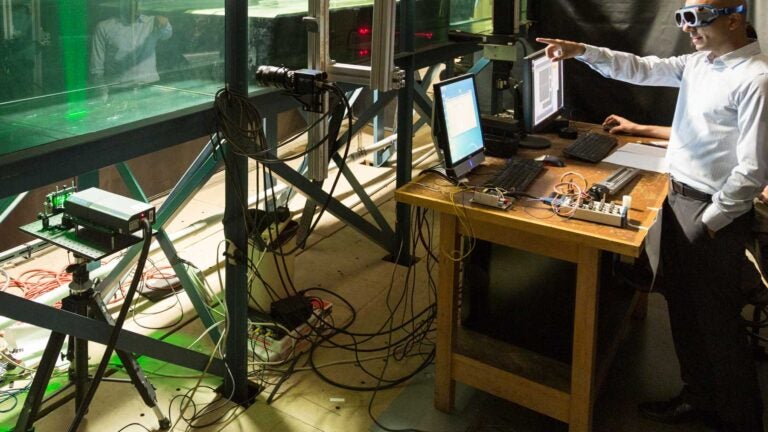
USC study of turbulence could make a difference in flight time, fuel efficiency
Engineer Mitul Luhar receives funding from program at the Air Force Office of Scientific Research
Future flights could be faster if a USC engineer has something to say about it.
Mitul Luhar will investigate the effects of porous and patterned surfaces on airflow to control turbulence. The assistant professor in the Department of Aerospace and Mechanical Engineering at the USC Viterbi School of Engineering had received funding from the Young Investigator Research Program at the Air Force Office of Scientific Research.
The program supports scientists and engineers who have received a PhD or equivalent in the last five years and show significant research ability. Each of the proposals by this year’s 58 awardees aims to enhance future capabilities of the Air Force.
By controlling turbulence, which affects aircraft speed and vibrations, Luhar’s research will impact fuel efficiency, flight time and aircraft maintenance. He plans to develop multifunctional surfaces that, in addition to providing structural integrity, will also influence the surrounding airflow. To do so, he will design and test various rough porous and patterned surfaces, veering away from the typical smooth surface designs.
“That was the original idea — you make your surface as smooth as possible,” Luhar said. “In many ways that’s still our best bet, but there’s research that suggests in many cases it’s actually beneficial to have specific surface patterns.”
Let it flow
The key challenge Luhar faces is the nature of turbulent flow. In general, turbulence is the motion of fluid particles that creates swirling vortices, known as eddies. This disruptive motion leads to an increase in drag, or air resistance, that slows the aircraft down. Additionally, turbulence influences the noise produced by the aircraft and can cause vibrations that damage the plane.
The ultimate goal is to, “suppress the turbulence or push it away from damaging frequencies to frequencies that are maybe less damaging from a vibration or noise perspective,” Luhar said.
His research will also explore the influence of complex surfaces on turbulence, building upon decades of previous studies that have attempted to find optimal surface structures.
“The way people have been doing it so far is you either do this in an experiment and then it’s a bit of a trial-and-error process or you do it in numerical simulations where you have to resolve everything from the largest eddies in the flow to the smallest eddies,” Luhar said. “And that essentially, even with current computational capabilities, is impossible for something at the scale of an aircraft.”
